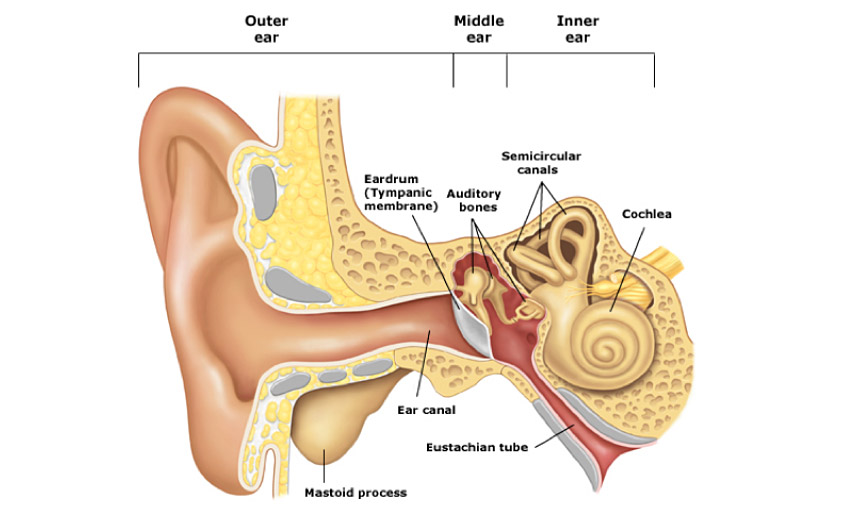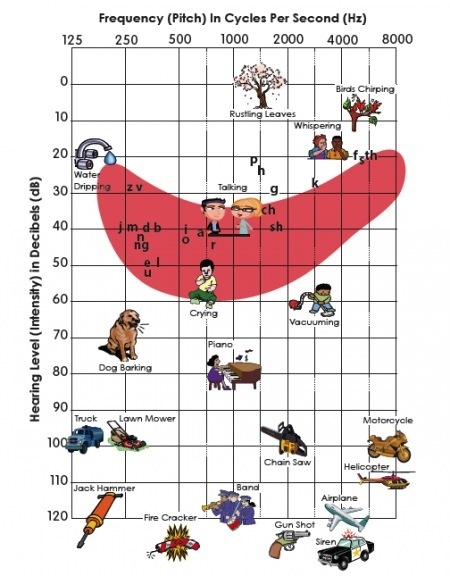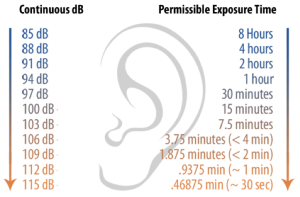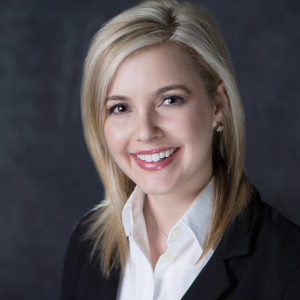Listen up… Turn it to the left
Jan
15
2016

Sensorineural (or permanent) hearing loss can be caused from many factors including: age, genetics, medications (like chemotherapy), and/or other health issues (such as diabetes), just to name a few.
A very common and often overlooked cause of hearing loss, is noise-induced hearing loss.
Noise-induced hearing loss!?!
Yes, that means it is possible that some noises in and around your environment could cause permanent damage to your hearing. In fact, of the approximately 30 million Americans that have hearing loss, 1 in 3 have developed hearing loss due to exposure to noise. Before we continue with more information about noise induced-hearing loss, let’s back up and talk about how the hearing process works.
Sound is funneled into the ear canal from the Pinna (outer ear) and travels down the ear canal to the eardrum.
When sound hit the eardrum it is turned into vibrations and those vibrations move the three ossicles, which are the tiniest bones in the body (the malleus, incus, and stapes). The moving vibrations continue to where they then push on the inner ear (the oval window of cochlea, to be exact), moving the fluid inside. This fluid movement inside the organ of hearing moves the hair cells, which trigger a neural pulse that travels to your brain and tells your brain you have heard something.
With exposure to noise and loud sounds, those hair cells, that are vital to our hearing system, begin to break down. In turn, sounds need to be louder to get those damaged hair cells to fire the neural pulse that travels up to the brain. This is hearing loss!
The Human ear can hear pitches of sound from as low as 20 Hz to as high as 20,000 Hz. The range of normal hearing is anything at 25 dB or softer in terms of volume. Generally, 0 dB is regarded as the threshold of hearing. Sounds in our environment vary in pitch and in loudness. Take a look at the audiogram below to get an idea of where some of our familiar sounds fall on the scale of pitch and loudness. (The letters show us where each letter of the alphabet falls on an audiogram) :
Here’s another way of viewing a loudness scale of sounds in our environment:
Keep in mind the average conversational speech takes place at about 60 decibels. Once sounds become as loud as 85 dB, they can cause permanent damage to your hearing. The louder the sound becomes, the quicker damage to our ears can occur. Take a look at these standards set by NIOSH and the CDC in 2002. The quick rule: for every additional 3 dB over 85 dB, subtract half the time before damage can occur.
Concerned for damage to your hearing from noise?
It may be time to visit the Centers For Hearing Care office nearest you for a diagnostic hearing evaluation if:
You have recently been around loud or harmful noises
Your hearing seems muffled after exposure to noise
You are currently experiencing tinnitus (ringing in the ears)
Now that we have talked about the bad news, the damage,
let’s talk about the good news, PREVENTION!
Noise-induced hearing loss can be prevented and here is how:
Protect yourself from harmful sounds! A harmful sound is one that is too loud and lasts too long OR is very loud and sudden. Some examples of harmful sounds are:
Lawn mowers
MP3 players and iPods at full volume
Concerts
Car races
Sporting events
Jet engines
Gunshots
Fireworks
Wearing hearing protection while you are around harmful sounds helps prevent noise-induced hearing loss. Some examples of hearing protection are:
Turning down the volume when listening to TV, music, etc. through headphones or ear buds
Simply walking away from the noise and getting yourself out of that environment
Foam ear plugs (can be found at sporting goods store, CVS/Walgreens)
Ear muffs (can be purchased at hardware store, sporting goods store, etc.)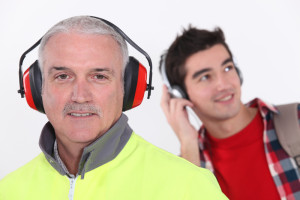
Custom made ear plugs (can be made by and purchased at your nearest CFHC office). Everyday wear especially for Musicians, Hunters and Shooters, Industrial Workers, and Police/Military.
So, do you still have the urge to blast your music?!?
Think of this song before you do!…
https://www.youtube.com/watch?v=kLSYq5kau_w
Want more information?
Check out these great websites that have been great references for this post:
http://www.dangerousdecibels.org/
http://www.turnittotheleft.org/
By:
Lauren L. Thomas, AuD., CCC-A
Doctor of Audiology
Centers for Hearing Care Austintown
Posted in Educational Tagged with: Audiogram, Audiologist, audiologists, audiology, Austintown, Behind the ear hearing aids, Boardman, BTE hearing aids, car races, Centers for Hearing Care, chemotheraphy, Cleveland, Columbiana, Columbiana County, concerts, dangerous decibels, decibels, Dementia, Dementia and Hearing Loss, diabetes, digital aids with Bluetooth technology, Doctor of Audiology, Dr. Sheryl Figliano, ear buds, Ear Muffs, eardrum, exposure lound sounds, Figliano, fireworks, foam ear plugs, gunshots, hard of hearing, harmful noises, hear aids, Hearing Aid, Hearing Aid Center, Hearing Aids, hearing center, hearing devices, hearing doctor, hearing impaired, hearing loss, Hearing Missions Foundation, hearing protection, hearing tests, hearingaids, helping the world hear, Howland, iphone, jet engines, lawn mowers, Liberty, Mahoning County, medications, mp3 players, music streaming, noise induced hearing loss, Northeast Ohio, Ohio, Pepper Pike, pitches of sound, progressive sensorineural hearing loss, ringing in ears, ringing in the ears, Salem, severe sensorineural loss, sporting events, tinnitus, tinnitus treatment, Trumbull County, turn it to the left, turn it to the left song, Youngstown
Should I Wear Ear Plugs this Weekend???
Jul
03
2015
by Stefanie Adams, Community Relations Coordinator
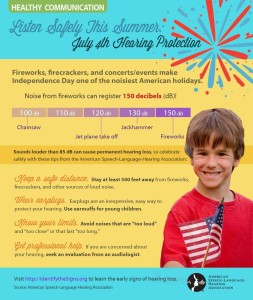
Honestly, I have to admit this Independence Day will be the first time I have considered if my family and I should wear ear plugs. (Brief pause for Audiologists gasping. haha) I am a new team member at Centers for Hearing Care and I am learning an incredible amount from our fantastic staff, including that much of what I thought I knew about hearing in general is wrong! Yes, I admit it, WRONG! There are many causes of hearing loss to which I had no idea about, as well as the effects untreated hearing loss can have on someone. Actually, I could go on and on about all the things that have amazed me since I started here, but I will save it for another blog post.
Seriously, I know fireworks are loud, but earplugs and earmuffs? Really?????
I can now tell you the research shows a resounding YES!!!!!
I used to see parents who had their children wearing earmuffs to watch fireworks and would think, “Good for them for being overly cautious! It isn’t that big of a deal though, and I’m not “THAT kind of Mom” who sweats the small stuff (especially with three kids and the youngest of these being two crazy boys)!” Now I realize, the only nonsensical thing is that the parents weren’t protecting their ears as well!
We DON’T reach an age where our hearing is no longer affected by loud sounds and we certainly NEVER reach an age where our hearing isn’t important and greatly affecting the quality of our lives! Therefore, ear plugs and ear muffs may not be fashionable, however, if you ask me, I would definitely rather spend 20 min wearing them and being “THAT Mom” that makes her family wear them too, then the rest of my life wishing I had!
Please celebrate safely with your loved ones this holiday weekend and every day! 🙂
Below is some of the information I had no idea about….
HAVE YOU HEARD????
Sounds louder than 85db can cause PERMANENT hearing loss.
For a point of reference, here are some common summer sounds and their decibel (dB) levels:
- Rustling leaves: 10 dB
- A whisper: 30 dB
- Humming of a fridge: 40 dB
- A conversation: 60 dB
- Busy street traffic: 70 dB
- Vacuum cleaner: 80 dB
- Lawn mower: 90 dB
And now … how fireworks and other loud noises measure up:
- Fireworks for spectators at 800 feet away: 88 to 126 dB
- Fireworks at 3 feet away: 150 dB
- Chainsaw: 100 dB
- Front row of a rock concert, Maximum output of some MP3 players: 110 dB
- Jet plane take off: 120 dB
- Jackhammer: 130 dB
- Motorcycles, firearms, small firearms: 120 to 150 dB
Posted in Educational Tagged with: adults ear plugs, American Speech-Language-Hearing Association, Austintown, Boardman, Centers for Hearing Care, Columbiana, Columbiana County, Ear Muffs, Ear Plugs, fireworks, fireworks damage hearing, Hearing Aid, Hearing Aid Center, Hearing Aids, hearing loss, Hearing Missions Foundation, Howland, kids wearing ear muffs, Liberty, Mahoning County, Northeast Ohio, Pepper Pike, Permanent hearing loss, sound decibals, times to wear ear plugs, Trumbull County, Youngstown
